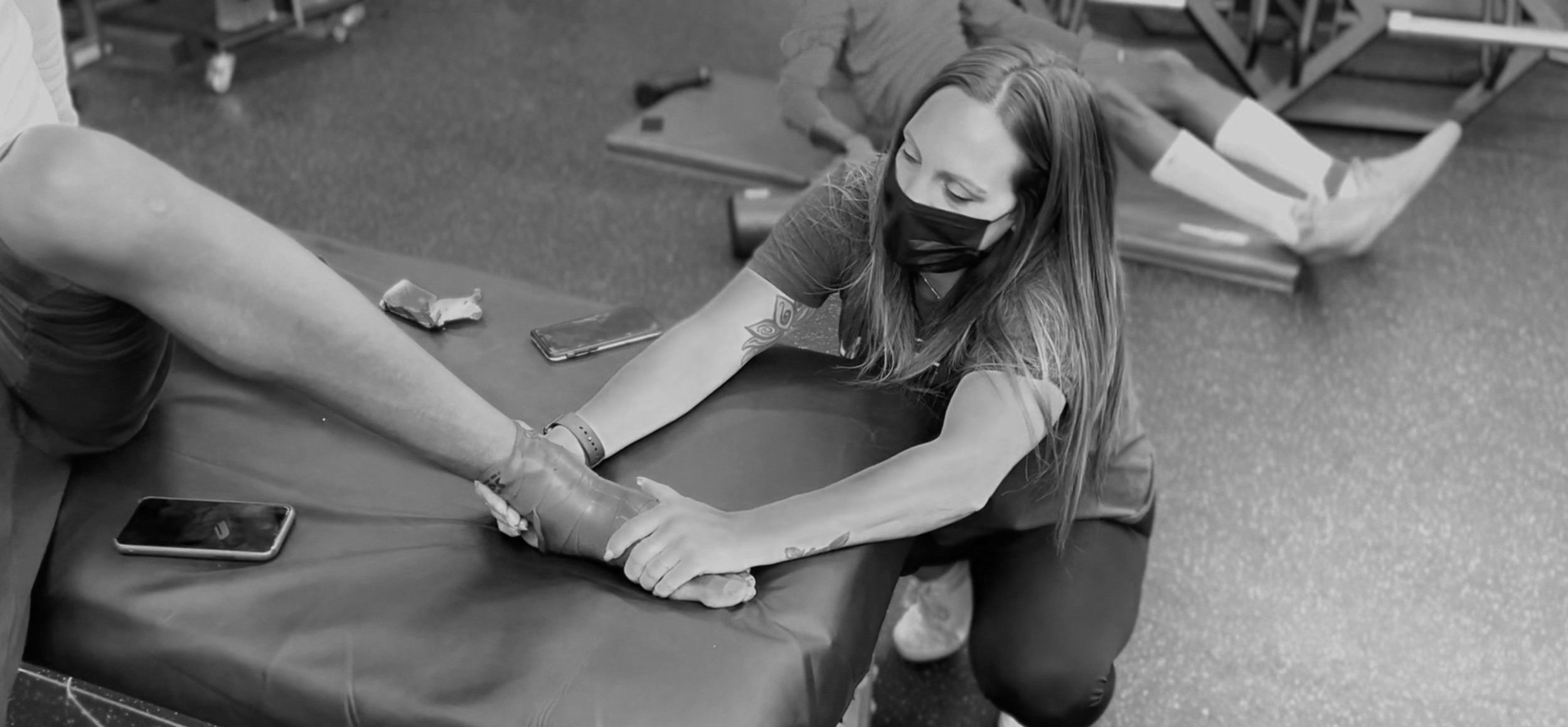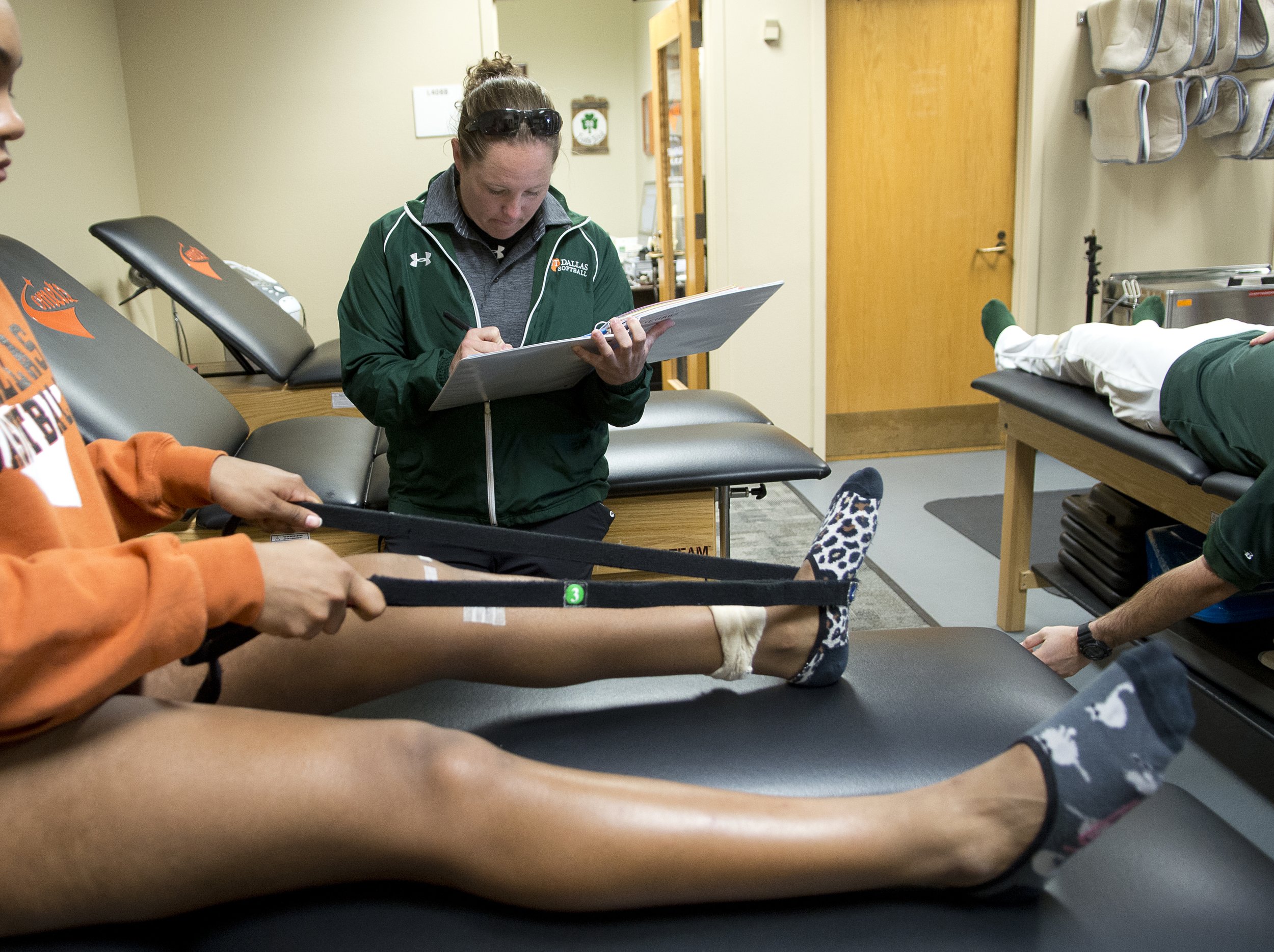
What is Athletic Training?
Who are Athletic Trainers?
Athletic trainers (ATs) are highly qualified, multi-skilled health care professionals who render service or treatment, under the direction of or in collaboration with a physician, in accordance with their education, training and the state's statutes, rules and regulations. As a part of the health care team, services provided by athletic trainers include primary care, injury and illness prevention, wellness promotion and education, emergent care, examination and clinical diagnosis, therapeutic intervention and rehabilitation of injuries and medical conditions. The NATA Code of Ethics states the principles of ethical behavior that should be followed in the practice of athletic training.
Athletic trainers are sometimes confused with personal trainers. There is, however, a large difference in the education, skillset, job duties and patients of an athletic trainer and a personal trainer. The athletic training academic curriculum and clinical training follows the medical model similar to other healthcare professions. Athletic trainers must graduate from an accredited master’s level program, and 70% of ATs have earned a master’s degree.
What can Athletic Trainers do?
Athletic Trainers are trained in many different domains and are able to perform many different roles, which is why you may see Athletic Trainers in so many different occupational settings. Often What an Athletic Trainer can do is dictated by the state practice act they are providing healthcare in.
Look up your state practice act here.
Athletic Trainers education is constantly growing but currently the domains they are educated in includes:
Injury and illness prevention and wellness promotion
Promoting healthy lifestyle behaviors with effective education and communication to enhance wellness and minimize the risk of injury and illness.
Examination, Assessment and Diagnosis
Implementing systematic, evidence-based examinations and assessments to formulate valid clinical diagnoses and determine patients’ plan of care.
Immediate and Emergency Care
Integrating best practices in immediate and emergency care for optimal outcomes.
Therapeutic Intervention
Rehabilitating and reconditioning injuries, illnesses and general medical conditions with the goal of achieving optimal activity level based on core concepts (i.e., knowledge and skillsets fundamental to all aspects of therapeutic interventions) using the applications of therapeutic exercise, modality devices and manual techniques.
Healthcare Administration and Professional Responsibility
Integrating best practices in policy construction and implementation, documentation and basic business practices to promote optimal patient care and employee well-being summary.
Read more about the Board of Certification Practice Analysis, which guides current Athletic Training Education as well as continuing education for practicing Athletic Trainers.
Where can I find an Athletic Trainer?
Athletic trainers’ work settings can include high schools, colleges, universities, professional sports teams, hospitals, rehabilitation clinics, physicians’ offices, corporate and industrial institutions, the military, and the performing arts, with new occupational settings continuously emerging.
Regardless of their practice setting, athletic trainers practice athletic training (or provide athletic training services) according to their education and state practice act. See above in What Athletic Trainers’ Can Do? for more details about state practice acts.
Find local Athletic Training Services and Athletic Trainer Locations Here.



